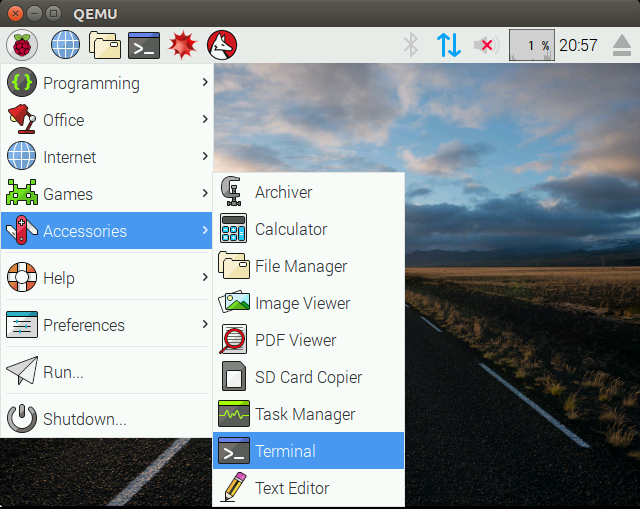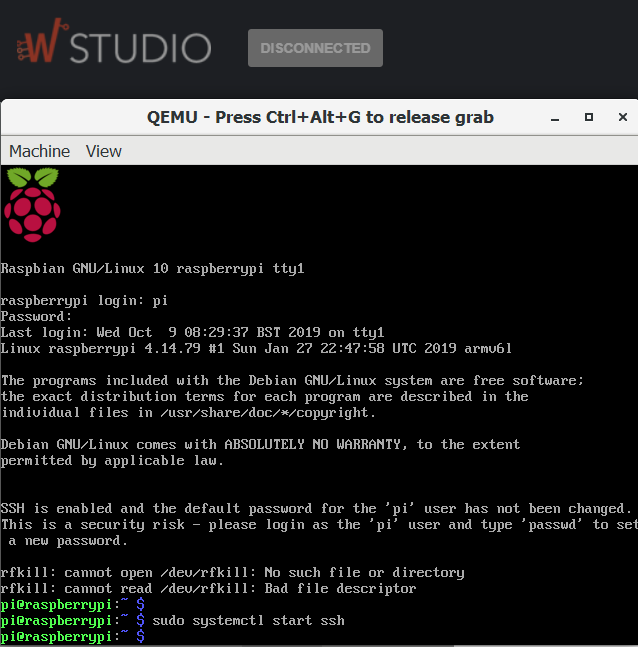
- #Raspberry pi emulator qemu mac how to
- #Raspberry pi emulator qemu mac install
- #Raspberry pi emulator qemu mac update
After installed, you can check your ability to emulate the binary formats by checking for ARM support by with binfmt-support.

If binfmt-support is installed, qemu-user-static package will register binary formats to run foreign binaries directly. In this mode QEMU can launch Linux processes compiled for one CPU on another CPU. The metapackage qemu-user-static provides user mode emulation binaries, built statically.
#Raspberry pi emulator qemu mac install
sudo apt-get install -y qemu qemu-user-static binfmt-support Install the qemu-user-static and binfmt-support packages.
#Raspberry pi emulator qemu mac update
We'll mount the disk image, chroot into it, and use QemuUserEmulation to update the image and execute the ARM code. For this example, RaspiOS but can be used/modified in general for any SBC using RaspberryPiImages.
#Raspberry pi emulator qemu mac how to
These are some notes for how to mount a RaspberryPi disk image, and use qemu-user-static to modify the image.

Running the *.img file instead of the SD card, three partitions are detected: sda1, sda2, sda5. This time partitions are not detected and I get the error copied above. (Notice that I used "fuse-ext2" which is a third-party on MacOSX). $ qemu-system-arm -kernel path/to/kernel-qemu -cpu arm1176 -m 256 -M versatilepb -no-reboot -serial stdio -append "console=ttyAMA0 root=/dev/sda5 rootfstype= fuse-ext2 rw" -hda /dev/disk2 Then I try to run the same from MacOSX, as follows: Where /dev/sdd is my SD card as recognized by Arch Linux. $ qemu-system-arm -kernel /path/to/kernel-qemu -cpu arm1176 -m 256 -M versatilepb -no-reboot -serial stdio -append "console=ttyAMA0 root=/dev/sda5 rootfstype=ext4 rw" -hda /dev/sdd I can emulate my Pi system from the SD card when I run QEMU from Arch Linux (as described in this link): $ qemu-system-arm -kernel path/to/kernel-qemu -cpu arm1176 -m 256 -M versatilepb -no-reboot -serial stdio -append "console=ttyAMA0 root=/dev/sda5 rootfstype=ext4 rw" -hda /path/to/ Using the following command, I can emulate my Pi image ( *.img) successfully (both from Arch Linux and from MacOSX: Kernel panic - not syncing: VFS: Unable to mount root fs on unknown-block(8,5)ĬPU: 0 PID: 1 Comm: swapper Not tainted 3.10.26+ #2 Please append a correct "root=" boot option here are the available partitions:

Actually, whatever I put in this rootfstype field, I get the same error: VFS: Cannot open root device "sda5" or unknown-block(8,5): error -6 Running QEMU, I try to specify the filesystem with rootfstype=fuse-ext2, but QEMU still does not detect the partitions. Now I can mount my ext4 filesystem without problems using: $ mount -t fuse-ext2 /dev/disk2s5 /mnt/sda5 Since MacOSX cannot mount ext4 natively, I tried to install osxfuse and fuse-ext2. It does not when I use the SD card, though.

However, the partitions on my SD card are not recognized properly: when I use the *.img file, QEMU detects the partitions. I am trying to emulate a RaspberryPi directly from the SD card (using the same commands as presented here from MacOSX.


 0 kommentar(er)
0 kommentar(er)
